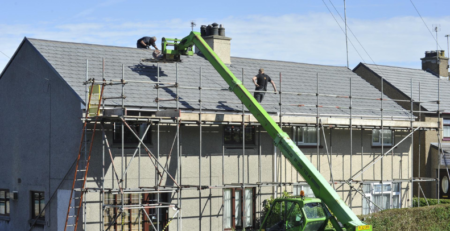Commercial Property: After the Pandemic
Even prior to the pandemic, commercial property landlords were having an increasingly hard time and found they were having to adapt to a tenant’s market. But this situation has been exasperated due to the pandemic.
Just over a year ago, about 10% of UK shop space was vacant, but now the figure is 12%, giving an indication of just how devastating the impact has been on the economy resulting from the pandemic. London was hit particularly hard, but the rest of the country has also seen a significant downturn.
60% of the UK’s regions have seen an increase in empty premises since March 2020, with the London region being hit the hardest, with empty shops increasing by about two-thirds. As the number of visitors to local high streets has dwindled, with about half the usual number of visitors during COVID, we have seen an increase in the number of boarded-up shops in many city centres.

With online retailers like Amazon attracting more and more people to online shopping, and with retailers already facing difficult times before Covid hit, the downward spiral of the UK’s high streets has continued apace. Walk down any high street and you will see those ubiquitous boards covering up a once thriving business.
According to Jamie Johnson, CEO of FJP Investment, “The pandemic didn’t cause the downward trend we have seen over the past 5 years or so, but it has made the situation worse and sped things up dramatically. This downward trend is unlikely to be reversed. Shop owners are having to adapt to a new normal in retailing, with shop space having to be repurposed after becoming no longer in use.”
Despite this, there are still some locations where demand for small retail and office space is looking good, especially in the suburbs with small-scale landlords. More than ever, commercial landlords are going back to basics and taking note of how to best attract and then keep their good retail tenants.
How long is the lease?
The length of the lease is best reflected by the uncertainty of the times. Tenants are facing a fast-paced world where change is rapid and traditional lease lengths, twenty, ten or even five years, are no longer suitable. Business tenants are now much less likely to agree to being tied into lengthy leases when their future is so uncertain and less clear. Tenants are now looking for lease agreements that are closer to three years with the option of a mid-term break.
Commercial leases with greater flexibility are something that landlords are increasingly getting used to as a new normal with shorter leases has set in, a trend that has accelerated since Covid hit. Tenants are demanding short, flexible leases that are more suitable to the times we live in, something that long commercial leases no longer provide.
Some locations have seen rental values drop as much as 50%, with as many as 30% of the units just sitting boarded up, making it harder for landlords to secure tenants for their premises. Given that landlords simply are unable to charge the same rents they once did, in today’s economic climate and changing buying habits, they may even have to consider going further with other concessions and incentives.
Landlords failing to adapt to the times may have to face vacant shops that come with several costs. Surely lower returns are better than having an unoccupied unit without tenants paying business rates, insurance, utility charges and maintenance costs.
On the other hand, tenants are more likely to pay extra for the benefit of securing a shorter lease and peace of mind. Landlords could also offer lower rent for a longer lease, giving tenants a better chance at making profit and thus better long-term security for all parties.
Tenant concessions
Commercial leases have in the past placed all the risk on the tenant, as the landlord receives a guaranteed rent no matter how good or bad the tenant’s business is doing. The pandemic has changed this dynamic somewhat as more landlords have recognised that the landlord-tenant relationship is a symbiotic one: it’s in the landlord’s own interest that the tenant survives.
Landlords, therefore, have increasingly resorted to offering concessions like rent holidays, loans during lockdowns or reduced rent levels, when tenants have not been trading due to restrictions from Covid.
Rent contingent of turnover
Although somewhat reluctantly, some landlords have agreed to tie rental income to the tenant’s turnover, thus taking a share of the risk of the tenant’s business, a move that has grown in popularity as the pandemic took its toll.
This type of rent means that the landlord accepts a basic income which is then topped up depending on how well the tenant’s business is doing. If the business does well, then the landlord will also do well. Here, the landlord has a vested interest in the tenant doing well, so landlords will likely have some interest in the tenant’s business record and acumen. It goes without saying that a great deal of trust is involved with this type of business arrangement.
As time goes on, the business world will be watching very closely how the pandemic progresses as it will continue to have an impact on the commercial property sector. With so many retail businesses that have closed since the pandemic, landlords and tenants are waking up to changing business relationships that are more symbiotic than previously. The dynamics have changed significantly. The sharing of business risk is better than the alternative of having to contend with empty premises.
ARE YOU READY TO START INVESTING?
Subscribe to our mailing list now for exclusive deals, investment guides and the latest information from the property market.







